Using DXE2, I've written a form generator that creates both .pas and .dfm files. I am working on a routine that will allow me to modify different properties in the the dfm, such as Font.Height and TabOrder.
When I open a generated file in notepad, everything looks exactly as I expect it to. When I open it up in Delphi, the properties get changed! The thing that is so frustrating is that I am using a form originally designed in the Delphi IDE as my template. I don't understand why Delphi won't respect my simple changes...
For example, the original Font.Height is -11. I read in the dfm, change it to -17, and save it. In notepad, it shows the -17. When I open it in Delphi, it shows up as -21!
Any ideas/tips/suggestions would be greatly appreciated!
